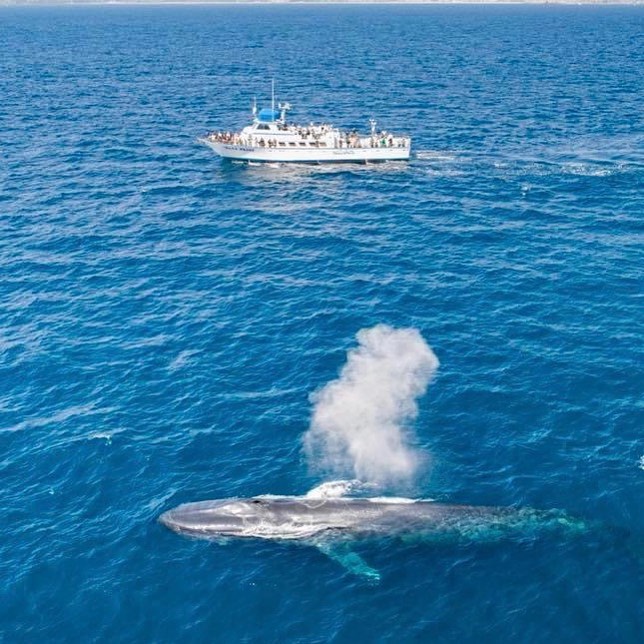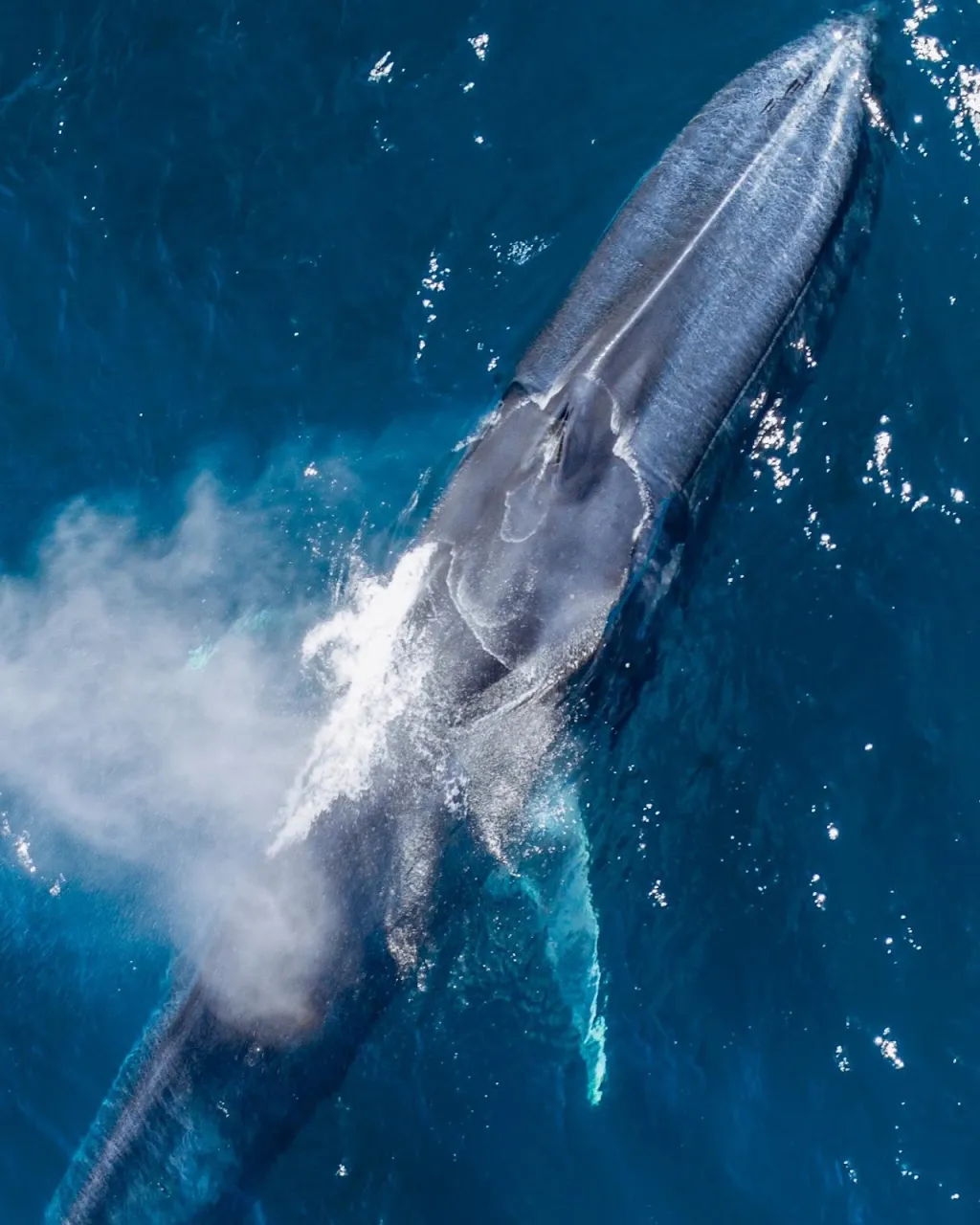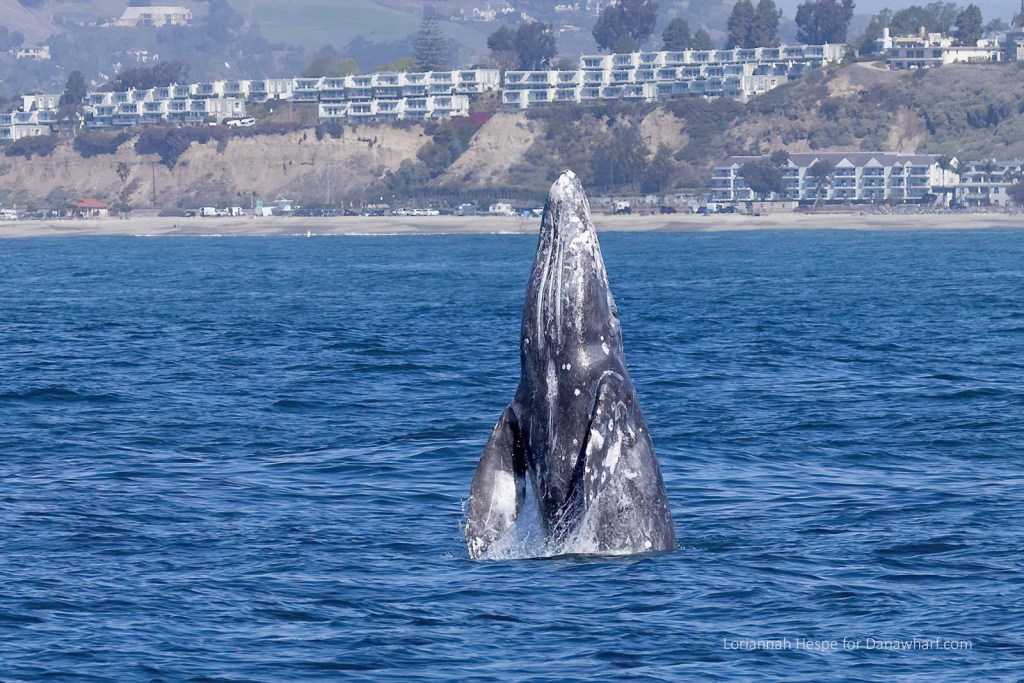The Best Times to go Whale Watching in Dana Point
Whale watching is one of the most sought-after marine activities in the world, and it is the reason that thousands of people flock to Dana Point Harbor every year. One question that people often ask when they come to Dana Point is, what is the best month to go whale watching? The answer to that question is that you can see whales and dolphins year-round in Dana Point, but you might see different species depending on what time of year it is. This post will highlight how your whale watching experience might differ throughout the year.
- December-April: Gray whales, Pacific white-sided dolphins, and Orcas on rare occasions
- May-November: Blue whales, Fin whales, Humpback whales, and occasionally sharks.
- Year-round: Many of the animals listed can be seen year-round in Dana Point, but Minke whales, Common dolphins, Bottlenose dolphins, Risso dolphins, seals, sea lions, and sea birds such as pelicans are seen often.

December-April
Gray whale season typically starts after Thanksgiving and runs through the end of April. Adult Gray whales range between 40 and 50 feet and can weigh over 90,000 pounds. Gray whales can be identified by their Gray coloration covered with white patches where barnacles and whale lice have attached. Gray whales are known for their curiosity towards boats, making them the focus of eco-tourism along the west coast of the north pacific. Gray whales can be seen in Orange County as they migrate 12,000 miles from the Arctic down to the lagoons of Mexico (the longest migration of any mammal!). If you want to see a Gray whale, the peak months to do so are January through March, which coincides with our annual Festival of Whales, which will be celebrating its 51st anniversary in March of 2022.
You can see dolphins year-round in Dana Point, but one species that are predominantly seen in the winter months is the Pacific white-sided dolphin. The Pacific white-sided dolphin is one of the most picturesque creatures in the sea. It can be identified by its three shaded bodies. The chin, throat, and belly are creamy white. The beak, flippers, back, and dorsal fin are dark gray. Light gray patches are seen on the sides, and a further light gray stripe runs from above the eye to below the dorsal fin, where it thickens along with the tailstock. The Pacific white-sided dolphin is an exciting species to watch because they often leap into the air. In addition, they tend to approach boats to bow-ride, which is when they ride the wake created by the ship. Check out this clip of an up-close interaction with some Pacific white-sided dolphins on a whale watching tour.
Orca or “Killer whale” sightings are rare in Dana Point, and their timing is often sporadic. However, if you are trying to see an Orca, your best chance is in the winter months. There are different types of Orcas, but the ones seen most in Dana Point are transient Orcas that feed on mammals such as dolphins, whales, seals, and sea lions.

May-November
The late spring and summer months are the best to see the awe-inspiring giant Blue whales, which can be as long as 110 feet! Blue whales are not only the largest animals on the planet but are the largest animals known to have ever existed and weigh on average between 290,000 and 330,000 pounds. Blue whales come to Southern California to load up on Krill, which they need to eat 8,000 pounds of every day! It is hard to comprehend just how giant these whales are, and there is nothing quite like seeing these precocious behemoths in person.

Fin whales are most commonly seen in the summer and fall months and are the second biggest animals on the planet behind Blue whales. The Fin whale gets its name from the easy-to-spot-fin on its back near its tail. Fin whales have distinctive coloration—black or dark brownish-gray on the back and sides and white on the underside. Like Blue whales, the Fin whale feeds on Krill, which it catches by skimming close to the surface, taking in tons of water which it then filters out through the baleen, leaving the prey trapped inside.
Humpback whales get their name from the distinctive “hump” on their back, and along with that, they can be identified by their grayish-black color and long pectoral fins. Humpbacks are also known for having the most complex songs of any whale species. They use these songs to communicate with other whales and navigate their surroundings. Humpback whales are a favorite of whale watchers because they can be found near shore and often display activities near the surface, such as breaching (jumping out of the water) or slapping the surface with their pectoral fins and tails.

You are most likely to spot a shark in Dana Point in the summer months when the water is warm and the ocean is teeming with marine life. A number of shark species pass through Dana Point, including Hammerhead sharks, Mako sharks, Blue sharks, and on occasion, Great white sharks. While sharks are not as commonly seen as whales, they make for an exciting encounter if you are lucky enough to see one.
Year-Round
Whale watching seasons are not set in stone, and many of the beautiful creatures listed above are seen throughout the year. Animals that are often seen year-round include Minke whales, Common dolphins, Bottlenose dolphins, Risso dolphins, seals, sea lions, and a number of seabirds.

What is the best month to go whale watching in dana point?
Whale watching in Dana Point is fantastic any month of the year: gray whales pass by on their migration from late November through April (with peak sightings in December through February), blue whales feed offshore from May through October, and species like humpback, fin, and minke whales—along with dolphins and even orcas—can turn up year-round, so you really can’t go wrong whenever you choose to go out on the water
